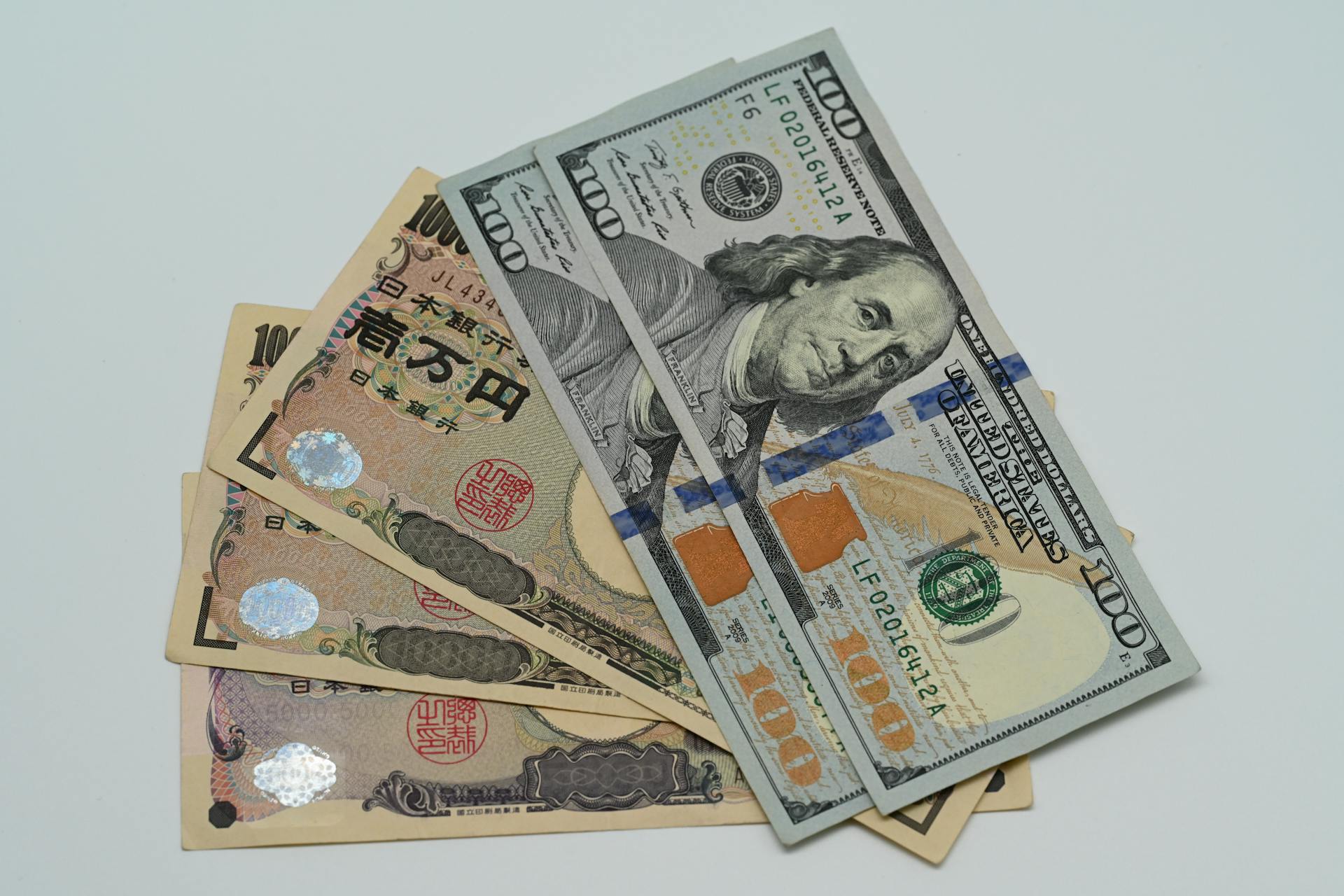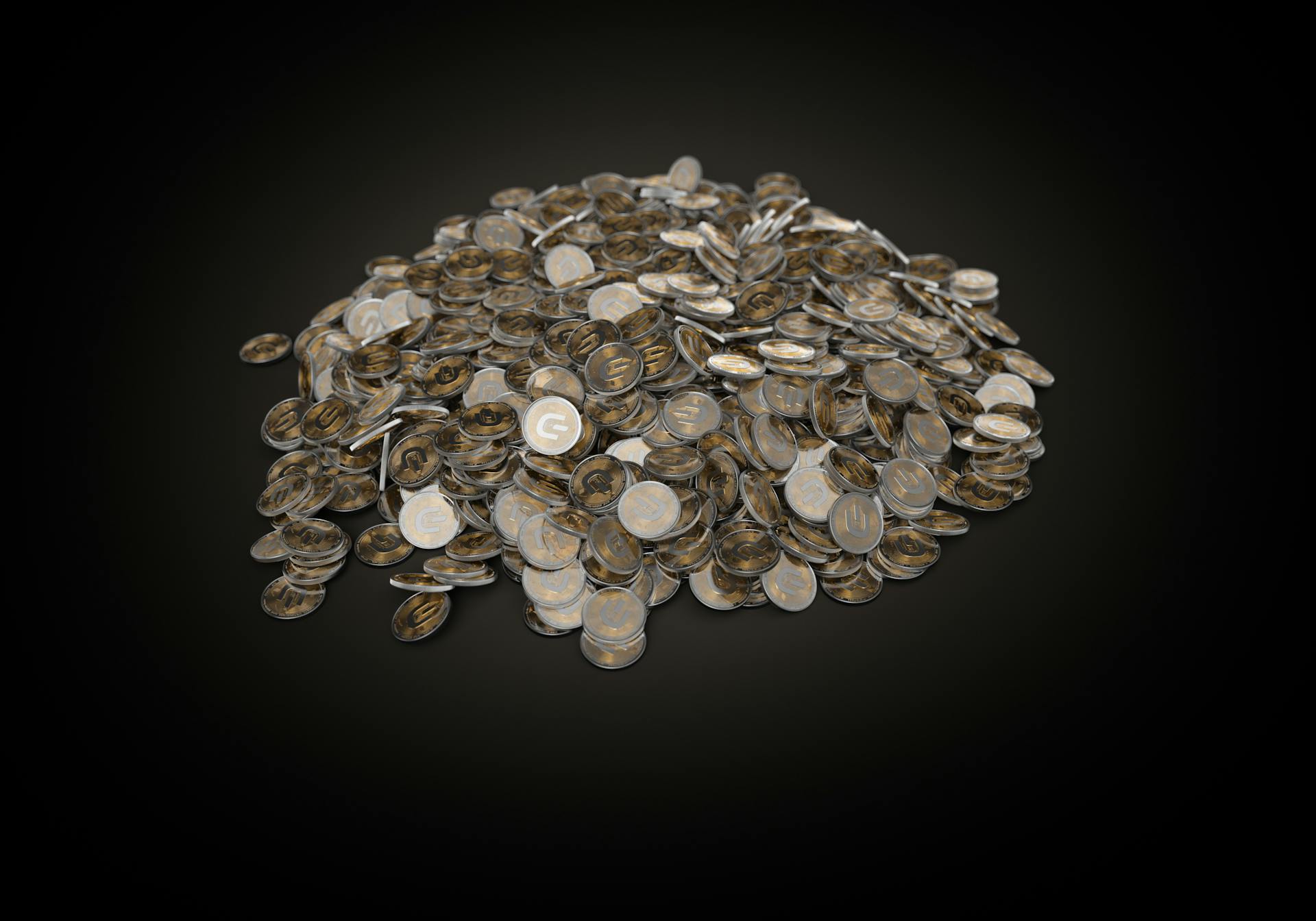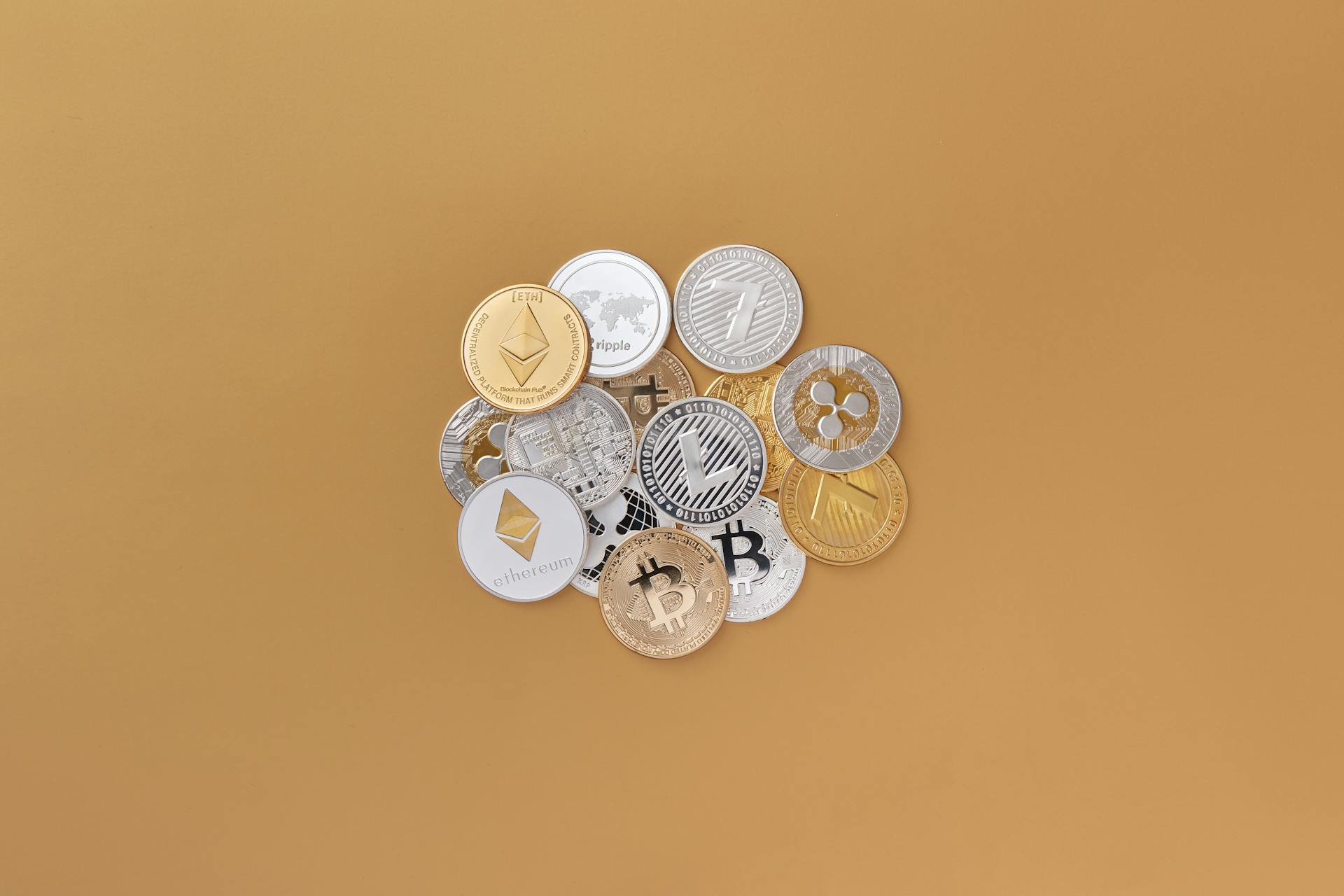
The petrodollar system has been the backbone of US dollar dominance for decades, but some argue it's on its last legs. In 1971, the US unilaterally ended the gold standard, allowing the dollar to float on the foreign exchange market. This move, made by President Nixon, marked a significant shift in the global economy.
The petrodollar system was established in 1973, when Saudi Arabia agreed to price its oil in US dollars. This decision, made by the Saudi government, was largely driven by the country's desire to stabilize its economy and increase its foreign exchange reserves. Since then, many other oil-exporting countries have followed suit, using the dollar as their primary currency for oil transactions.
The petrodollar system has been incredibly lucrative for the US, generating massive foreign exchange reserves and allowing the country to maintain a significant trade deficit. According to the Federal Reserve, the US has accumulated over $6 trillion in foreign exchange reserves, much of which is held by foreign central banks in the form of US Treasury securities.
Recommended read: Petro Dollar Exit
The Petrodollar System
The petrodollar system was born out of three key events in the early 1970s. The end of the gold standard, the 1973 Oil Crisis, and the formalization of the petrodollar agreement all played a crucial role in its creation.
The Bretton-Woods agreement, signed in 1944, established monetary management rules for many countries, including the U.S., U.K., France, Germany, and 40 others. It pegged their currencies to the U.S. dollar and guaranteed they could exchange dollars for gold at $35 per troy ounce.
The U.S. had the majority of the world's gold reserves, holding 651.4 million troy ounces at its peak. However, President Nixon "closed the gold window" in 1971, breaking the promise that dollars would always be convertible for gold.
This decision left many world leaders enraged, as they had opted into the Bretton-Woods system based on the promise of gold-backed dollars. Suddenly, the U.S. dollar had nothing backing it.
For more insights, see: Ray Dalio Changing World Order Pdf
The 1973 Oil Crisis was sparked by OPEC's decision to stop selling oil to the U.S. and allied nations in response to U.S. support for Israel during the Yom Kippur War. This led to a sharp increase in oil prices, causing stagflation in the U.S.
The crisis was eventually resolved with the help of Henry Kissinger, who negotiated a cease-fire between Israel and its adversaries. However, the crisis marked a turning point in the global economy and paved the way for the petrodollar system.
In 1973, Kissinger brokered a deal with Saudi Arabia, known as the U.S.-Saudi Arabia Petrodollar Agreement. In exchange for advanced military equipment and training, as well as security guarantees, Saudi Arabia would use U.S. dollars exclusively for oil pricing and sales.
Other OPEC countries followed suit by 1975, and the use of U.S. dollars became widespread. This restored the demand for the dollar in foreign exchange markets and reinforced its dominance as the global reserve currency.
The petrodollar system has its roots in the idea of "petrodollar recycling", coined by Henry Kissinger. He suggested that Saudi Arabia invest its surplus revenues in U.S. government debt, which would make government debts more affordable and lead to even more deficit spending.
Check this out: Petrodollar Agreement 1973
In exchange, the U.S. guaranteed Saudi Arabia's borders and provided military equipment and training. This arrangement has been in place for decades, with the U.S. benefiting from a reliable lender for government debt and a guaranteed global demand for dollars.
Here's a brief timeline of the key events that led to the creation of the petrodollar system:
- 1944: The Bretton-Woods agreement is signed, establishing monetary management rules for many countries.
- 1971: President Nixon "closes the gold window", breaking the promise that dollars would always be convertible for gold.
- 1973: The 1973 Oil Crisis occurs, leading to a sharp increase in oil prices and stagflation in the U.S.
- 1973: The U.S.-Saudi Arabia Petrodollar Agreement is brokered, requiring Saudi Arabia to use U.S. dollars exclusively for oil pricing and sales.
- 1975: Other OPEC countries follow suit, using U.S. dollars for oil pricing and sales.
Implications and Effects
The petrodollar system has been a cornerstone of global finance for decades, but its implications and effects are far-reaching and complex. A significant shift away from the dollar could have unpredictable consequences, influencing commodity markets, global financial stability, and international trade agreements.
The Saudi government currently holds sizable dollar-denominated holdings, estimated to be around $1.5 trillion. This is due in part to the country's decision to maintain a fixed exchange rate to the dollar, requiring large dollar reserves to intervene in foreign-exchange markets.
A shift away from the dollar could have a ripple effect on the global economy, particularly in commodity markets. If Russia, Saudi Arabia, and other major oil producers were to price oil in currencies other than dollars, it could lead to a significant decrease in the dollar's value.
Suggestion: Saudi Arabia Not Renewing Petrodollar Agreement
The petrodollar system was formalized in 1973, when the US and Saudi Arabia agreed to use US dollars exclusively for oil pricing and sales. Other OPEC countries followed suit, leading to a significant increase in demand for the dollar in foreign exchange markets.
The dollar's dominance as a global reserve currency was reinforced by this agreement, making it the primary currency for international trade and finance. However, this also means that a shift away from the dollar could have significant implications for global economic stability.
The cumulative current account of Saudi Arabia is close to $1.5 trillion, suggesting that the country has significant dollar-denominated holdings. This is due in part to the country's decision to maintain a fixed exchange rate to the dollar, which requires large dollar reserves to intervene in foreign-exchange markets.
Here are some key statistics on the petrodollar system:
A shift away from the dollar could have significant implications for global economic stability, including unpredictable consequences for commodity markets, global financial stability, and international trade agreements.
USA and Middle East Relationship
The USA and Middle East relationship is a complex one. The US-Saudi relationship, in particular, has been a key part of this dynamic.
The reality of the US-Saudi relationship is far more nuanced than a simple oil-for-dollars arrangement. It encompasses security, trade, and diplomatic ties.
Saudi Arabia is looking for a deeper security assurance and relationship with the US. This is a significant shift from decades ago.
The US economy has a smaller share of the global economy than it was 50 years ago. This has changed the dynamics of the relationship.
Saudi Arabia has recently worked to diversify its alliances, including increasing its ties to Russia and China. This is a strategic move to balance its regional power.
Saudi Arabia has ambitions to establish itself as a regional powerhouse. This involves a complex balancing act between its alliances and relationships.
Recent shifts in Saudi foreign policy reflect a diversification strategy rather than a complete abandonment of the US dollar. This means the petrodollar is not dead just yet.
See what others are reading: Petrodollar June 9
The Agreement and Its Myth
The 1974 agreement between the US and Saudi Arabia was not a formal "petrodollar agreement" as some speculate. There is no evidence of an exclusive oil-for-dollars arrangement.
The closest thing to a formal agreement was a secret deal in 1974 where the US promised military aid and equipment to Saudi Arabia in exchange for investing billions of dollars in US treasuries. This deal was brokered by US Treasury Secretary William Simon and his team.
The agreement did not explicitly mention settlement of Saudi oil in dollars or US oil purchases in exchange for Saudi Treasury investments. It aimed to create a strategic partnership to stabilize the region and enhance bilateral relations.
You might like: 1974 Petrodollar Accord
The Myth of the Agreement
There is no evidence of a formal "petrodollar agreement" between the US and Saudi Arabia, despite recent speculation. A 1974 pact signed by US Secretary of State Henry Kissinger and Saudi Prince Fahd bin Abdulaziz Al Saud only fostered close economic and military cooperation, not an exclusive oil-for-dollars arrangement.

The misconception about a petrodollar agreement stems from this 1974 pact. MarketWatch reports that the closest thing to a "petrodollar agreement" was a secret deal between the two nations later that year.
The secret deal involved the US promising military aid and equipment in exchange for Saudi Arabia investing billions of dollars of its oil sale proceeds in US treasuries. This deal was revealed by a confidential diplomatic cable obtained from the US National Archives and reported by Bloomberg News in 2016.
Experts and fact-checkers have confirmed that the claims of a formal petrodollar deal are inaccurate.
Intriguing read: End of Us Currency
Quid Pro Quo
The term "Quid Pro Petro" refers to the oil priced in dollars and the arrangement between the US and Saudi Arabia to recycle petrodollars through US Treasury bond purchases.
This arrangement was brokered by US Treasury Secretary William Simon and his team during a four-day layover in Jeddah in 1974, where they negotiated a confidential agreement with Saudi officials.
The agreement was made in secret, and its details were only made public through a diplomatic cable obtained from the National Archives database in 2016.
The 1974 agreement between the US and Saudi Arabia was signed on the 50th anniversary of a military and economic pact between US Secretary of State Henry Kissinger and Saudi Prince Fahd bin Abdulaziz Al Saud, which inaugurated a new era of close cooperation between the two countries.
The 1974 pact established joint commissions for economic and military collaboration, but it did not explicitly mention the settlement of Saudi oil in dollars or US oil purchases in exchange for Saudi Treasury investments.
A month after the 1974 agreement, the US Treasury Secretary William Simon and his deputy, Gerry Parsky, undertook a mission to the Kingdom to further discuss the arrangement.
Simon had a background in finance, having served as a senior executive at Salomon Brothers, where he was instrumental in developing the firm's government bond trading department.
Expand your knowledge: Petrodollar Pact
Frequently Asked Questions
Will the petrodollar collapse?
The petrodollar is expected to decline, but not collapse, as oil and other commodities are increasingly traded in currencies other than the US dollar. However, a complete collapse is unlikely to be triggered by Saudi Arabia's actions.
Is Saudi Arabia dropping the petrodollar?
There is no confirmed evidence that Saudi Arabia is abandoning the petrodollar arrangement. Speculation about changes to its oil-pricing policy remains unverified.
Sources
- https://www.project-syndicate.org/onpoint/saudi-petrodollars-do-they-matter-for-us-currency-hegemony-by-carla-norrlof-2024-07
- https://www.birchgold.com/blog/finance/petrodollar-collapse/
- https://www.tbsnews.net/world/global-economy/saudi-arabias-petro-dollar-exit-global-finance-paradigm-shift-875321
- https://thefinancialexpress.com.bd/views/implications-of-the-non-renewal-of-the-petrodollar-system
- https://birchesgroup.com/2024/08/29/petrodollar-panic-separating-fact-from-fiction/
Featured Images: pexels.com


